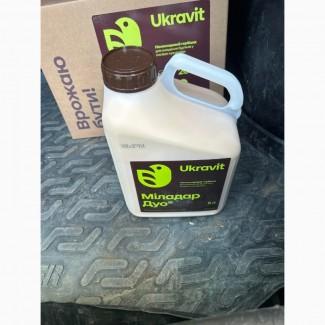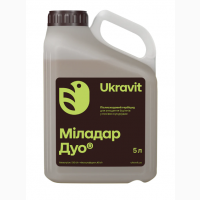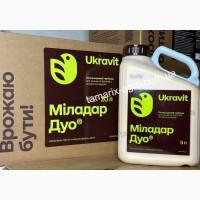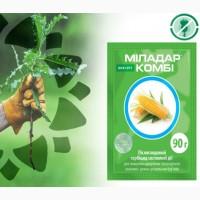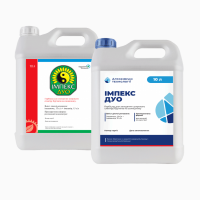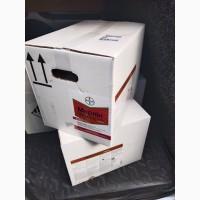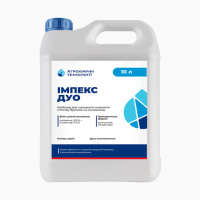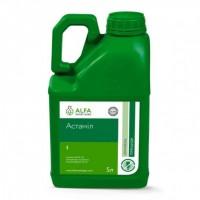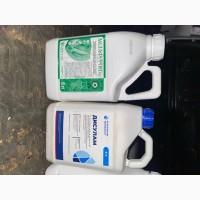/ Fertilizers and plant protection products / Herbicides / Miladar Duo - Postemergence herbicide for protection...
Sell / buy
Miladar Duo - Post-emergence herbicide to protect corn crops from weeds, Kyiv region.
Price2500 UAH.
Region:all of Ukraine,
Kyiv region.
(Vyshhorodok)
Updated:
Miladar Duo — a systemic post-emergence herbicide for the destruction of annual, perennial grass and annual dicotyledonous weeds in corn crops.
The main characteristics of the drug:
Active substances: Mesotrione 100 g/l, + nicosulfuron 45 g/l
Drug form: Suspension concentrate
Crop:Corn
Spectrum of action: Annual dicotyledonous, perennial grass weeds.
Action type: Post-emergence
Packaging: plastic canisters of 5 l, the price is per canister.
Advantages of using herbicide Miladar Duo:
Highly effective destroys all types of weeds in corn crops;
Excellent control of the weed - Syrian cottonwood;
The herbicide has prolonged soil activity, restraining the appearance of subsequent waves of dicotyledonous weeds;
Flexibility in terms of application - from 3 to 8 (10) leaves of corn;
There is no phytotoxicity to the culture in comparison with other herbicides;
There is no need for tank "partners";
Economy in use.
Mechanism of action of herbicide Miladar Duo:
The active substance, Nicosulfuron, stops cell division by blocking the processes responsible for the biosynthesis of basic amino acids. Mesotrione blocks the action of plant enzymes involved in the synthesis of carotenoids, which expands the absorption spectrum of chlorophyll. The combination of two active substances makes it possible to destroy weeds resistant to herbicides based on 2,4-D, sulfonylureas, triazines, and others.
What weeds does Miladar Duo work on?
Common common,mustard (species), common buckwheat, medium star, chicken millet, mouse millet (species), glove (species), creeping wheatgrass, garden purslane, millet (species ), wild radish, field romance, chamomile (species), styrica (species), ragweed (species), bitter gourd (species), deaf purple nettle, field hen's eye, garden thistle, sedum sedum, one-year-old nightshade, chives (species), common spergel, Theophrastus's ropewort, common sedum, white quinoa, common dorsum, small-flowered gorse, sunflower carrion, black nightshade, common nettle, Syrian cottonwood.
Instructions for use of the drug Miladar Duo:(//tractor-service.com)
The optimal temperature conditions for processing are 12-25 °C with optimal soil and air humidity;
The application phase is from 3-5 to 8 corn leaves;
At the time of processing, annual grass weeds should be in the phase of 2-3 leaves, perennial grasses with a height of 10-15 cm, annual grasses - cotyledons - 4 leaves.
When processing overgrown weeds, the effectiveness of the action decreases.
It is not recommended to carry out inter-row cultivation within 7 days after applying the herbicide - this will reduce its herbicidal activity.
It is not recommended to use the drug under adverse conditions (cold or hot weather, excessive moisture, and a depressed state of weeds).
Miladar Duo has some restrictions on sowing crops in crop rotation: after its application, all agricultural crops can be sown for the following year, except for sugar beets, peas, chickpeas and vegetables.Sunflower and soybean — after plowing.
Rate of consumption of working solution Miladar Duo:
150-250 l/ha, depending on the numerical composition of the weed component.
Rules of application and cost norms of Miladar Duo:
Culture Object against which it is processed Rate of consumption of the drug l/ha Method, period of processing, restrictions
Corn
Annual and perennial cereals, annual dicotyledonous weeds
1.25 — 1.5* PAR Tandem (0.15%) Spraying in phase 3-5 (8) of culture leaves.
Compatibility with other drugs:
Miladar Duo is compatible with other pesticides and agrochemicals, except alkaline, on the relevant crops.
Before preparing the working mixtures, it is advisable to check the compatibility of the drugs (absence of sediment, foam, delamination, clumping, incomplete dissolution of one of the drugs, etc.).
Do not make tank mixtures with preparations from the group of organophosphorus compounds.
The interval between treatments is 7 days.
The main characteristics of the drug:
Active substances: Mesotrione 100 g/l, + nicosulfuron 45 g/l
Drug form: Suspension concentrate
Crop:Corn
Spectrum of action: Annual dicotyledonous, perennial grass weeds.
Action type: Post-emergence
Packaging: plastic canisters of 5 l, the price is per canister.
Advantages of using herbicide Miladar Duo:
Highly effective destroys all types of weeds in corn crops;
Excellent control of the weed - Syrian cottonwood;
The herbicide has prolonged soil activity, restraining the appearance of subsequent waves of dicotyledonous weeds;
Flexibility in terms of application - from 3 to 8 (10) leaves of corn;
There is no phytotoxicity to the culture in comparison with other herbicides;
There is no need for tank "partners";
Economy in use.
Mechanism of action of herbicide Miladar Duo:
The active substance, Nicosulfuron, stops cell division by blocking the processes responsible for the biosynthesis of basic amino acids. Mesotrione blocks the action of plant enzymes involved in the synthesis of carotenoids, which expands the absorption spectrum of chlorophyll. The combination of two active substances makes it possible to destroy weeds resistant to herbicides based on 2,4-D, sulfonylureas, triazines, and others.
What weeds does Miladar Duo work on?
Common common,mustard (species), common buckwheat, medium star, chicken millet, mouse millet (species), glove (species), creeping wheatgrass, garden purslane, millet (species ), wild radish, field romance, chamomile (species), styrica (species), ragweed (species), bitter gourd (species), deaf purple nettle, field hen's eye, garden thistle, sedum sedum, one-year-old nightshade, chives (species), common spergel, Theophrastus's ropewort, common sedum, white quinoa, common dorsum, small-flowered gorse, sunflower carrion, black nightshade, common nettle, Syrian cottonwood.
Instructions for use of the drug Miladar Duo:(//tractor-service.com)
The optimal temperature conditions for processing are 12-25 °C with optimal soil and air humidity;
The application phase is from 3-5 to 8 corn leaves;
At the time of processing, annual grass weeds should be in the phase of 2-3 leaves, perennial grasses with a height of 10-15 cm, annual grasses - cotyledons - 4 leaves.
When processing overgrown weeds, the effectiveness of the action decreases.
It is not recommended to carry out inter-row cultivation within 7 days after applying the herbicide - this will reduce its herbicidal activity.
It is not recommended to use the drug under adverse conditions (cold or hot weather, excessive moisture, and a depressed state of weeds).
Miladar Duo has some restrictions on sowing crops in crop rotation: after its application, all agricultural crops can be sown for the following year, except for sugar beets, peas, chickpeas and vegetables.Sunflower and soybean — after plowing.
Rate of consumption of working solution Miladar Duo:
150-250 l/ha, depending on the numerical composition of the weed component.
Rules of application and cost norms of Miladar Duo:
Culture Object against which it is processed Rate of consumption of the drug l/ha Method, period of processing, restrictions
Corn
Annual and perennial cereals, annual dicotyledonous weeds
1.25 — 1.5* PAR Tandem (0.15%) Spraying in phase 3-5 (8) of culture leaves.
Compatibility with other drugs:
Miladar Duo is compatible with other pesticides and agrochemicals, except alkaline, on the relevant crops.
Before preparing the working mixtures, it is advisable to check the compatibility of the drugs (absence of sediment, foam, delamination, clumping, incomplete dissolution of one of the drugs, etc.).
Do not make tank mixtures with preparations from the group of organophosphorus compounds.
The interval between treatments is 7 days.
|
Store, contacts | |
Yuriy/ отзывы, инфо . / activity assessment | |
|
Phone:
+38(xxxxxx
показать
| |
All ads of the user ~1000 | |
Ad ID: #969796
(added by a registered user, registration date: 10-08-2016)
Added / Updated: 09-10-2024 08:41 (current, until: 09-10-2025)
Permanent ad address:
Showed / watched for today: ?, total: ?
Similar ads
Among them are many interesting...
